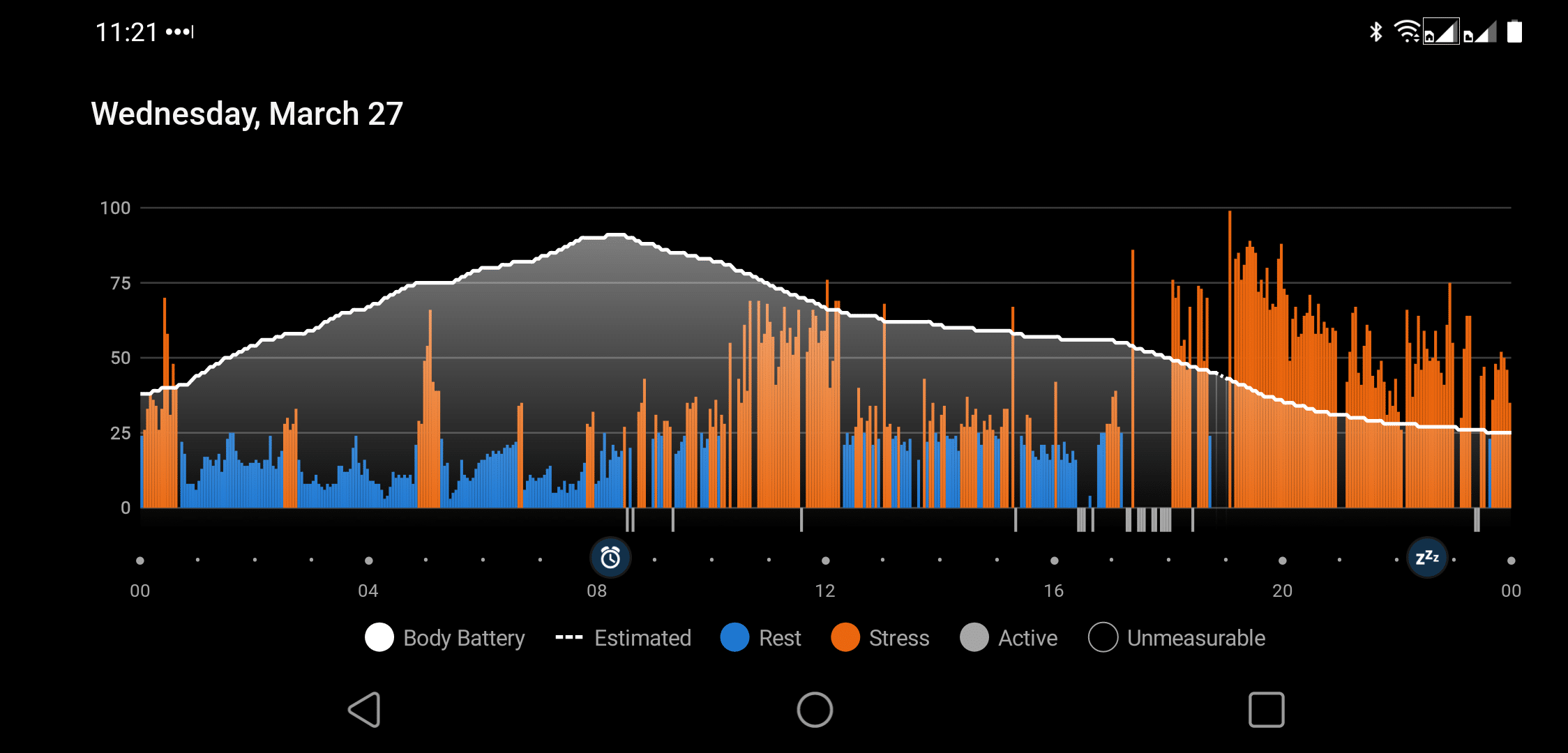Stress affects our health more than we might know. It’s crucial to spot and understand stress biomarkers to handle stress better. These markers help us measure our body’s stress response scientifically, which can guide us in improving our health 123. Keep reading to learn how to monitor and manage stress effectively.
What are the key biomarkers of stress?
Key stress biomarkers include cortisol, catecholamines (like epinephrine and norepinephrine), ACTH, and DHEA. These indicators help quantify stress levels by reflecting the body’s hormonal and neuroendocrine response to psychosocial or physical stressors, which helps monitor and research stress management and its effects.
This blog is part of a series on “measuring stress.”
Key Biomarkers for Stress Detection and Management
- Cortisol: Often referred to as the “stress hormone,” its levels in the blood, saliva, or hair can indicate both acute and chronic stress.
- Alpha-amylase: Found in saliva, this enzyme increases stress-related sympathetic nervous system activity.
- DHEA (Dehydroepiandrosterone) counterbalances cortisol and can indicate chronic stress when its cortisol ratio is low.
- Epinephrine and Norepinephrine: These catecholamines, measured in blood or urine, surge acute stress, preparing the body for a fight-or-flight reaction.
- Heart Rate Variability (HRV): A measure of the variation in time between heartbeats, it can reflect the body’s resilience to stress.
- Oxidative Stress Markers (e.g., Malondialdehyde): High levels in the blood can indicate cellular damage from prolonged psychological or physical stress.
- Brain-Derived Neurotrophic Factor (BDNF): This protein helps regulate mood and stress response; lower levels are often associated with chronic stress.
Understanding Stress and Its Biomarkers
Stress sneaks into our lives, sometimes without a knock on the door. It comes in two flavors: the nervous energy before a presentation (psychosocial stress) and the relentless pressure of daily tasks (chronic stress). Our body responds through various signals known as physiological biomarkers. These include popular ones like cortisol, the stress hormone spotlight stealer, and others like ACTH, dopamine, and serotonin, which play their parts behind the scenes.
These biomarkers don’t just hang around; they offer clues about our body’s stress levels. For instance, cortisol and ACTH levels rise when facing a challenge. Meanwhile, serotonin and dopamine can give us insight into our mood under stress. Understanding these allows us to start managing stress, one biomarker at a time.
Normal cortisol levels typically peak in the early morning and gradually decrease throughout the day. Chronic stress can lead to consistently elevated cortisol levels, negatively affecting health. To lower cortisol levels, one can try stress-reducing activities such as exercise, meditation, deep breathing, adequate sleep, and spending time in nature.
Hormonal Biomarkers: Cortisol and Beyond
The body’s response to stress goes beyond cortisol’s call to action. ACTH signals that it’s game time for adrenal glands, leading to cortisol’s rise. But there’s more to the story. Hormones like DHEA counterbalance cortisol and aim to restore peace. It’s akin to a well-planned diplomatic negotiation inside your body.
Let’s not forget about others like prolactin and oxytocin, which are typically linked to other body processes but also react to stress. Their levels can fluctuate, hinting at how stress affects us in multifaceted ways. Understanding these variations helps us understand the broader narrative of stress’s impact on hormonal harmony.
| Biomarker | Source | Role in Stress Response |
|---|---|---|
| Cortisol | Adrenal cortex | Regulates metabolism and controls stress response |
| Alpha-amylase | Salivary glands | Indicates sympathetic nervous system activation |
| Dopamine | Brain | Affects mood, attention, and motivation under stress |
| Serotonin | Central nervous system, gastrointestinal tract | Regulates mood, appetite, and sleep |
| DHEA | Adrenal glands | Counteracts the effects of cortisol, promoting resilience |
| Epinephrine (Adrenaline) | Adrenal medulla | Prepares body for fight-or-flight response |
| Norepinephrine | Adrenal medulla | Supports alertness and arousal |
| Glutamate | Brain | Principal excitatory neurotransmitter, involved in cognitive functions |
| GABA (Gamma-aminobutyric acid) | Brain | Main inhibitory neurotransmitter, reduces neuronal excitability |
Neuroendocrine Biomarkers: Monitoring Stress Responses
The neuroendocrine system is where the action happens for stress response. This system bridges our nervous system with hormonal outputs, creating a grand theatre of biochemical activity. Catecholamines like epinephrine and norepinephrine enter during stress, preparing the body for a ‘fight or flight’ response. At the same time, serotonin and dopamine might take a backseat, affecting our mood and emotions.
This ensemble of neuroendocrine biomarkers, including the guest appearances of adrenocortical and adrenomedullary hormones, plays a crucial role in reacting to, recovering from, and adapting to stress. Monitoring these can provide a panoramic view of our stress responses, offering hints on adapting our stress management techniques.
Oxidative Stress and Other Biochemical Indicators
When our bodies are under stress, there’s a silent battle against oxidative stress – it’s like an undercover agent causing havoc. Oxidative stress occurs when there’s an imbalance between free radicals and antioxidants in the body. It signals that our body is under duress, possibly from too much psychological or physical stress.
Beyond the usual suspects, biochemical indicators like glutamate and gamma-aminobutyric acid (GABA) also join the fray. These neurotransmitters deal with stress in the brain, where glutamate is the gas pedal, and GABA is the brake. Monitoring these could offer new strategies for calming the storm inside, making stress management a more scientific endeavor.

High Blood Pressure: A Cardinal Indicator of Stress
High blood pressure, often referred to as hypertension, stands out as an indirect marker of stress, albeit not classified explicitly among the conventional biomarkers of stress, such as cortisol or catecholamines. Chronic stress can lead to sustained elevations in blood pressure, as the body remains in a prolonged state of ‘fight or flight’ response, causing the heart to work harder and the blood vessels to constrict.
This physiological reaction not only indicates the presence of stress but also underscores the interconnectedness of stress with cardiovascular health. Elevated blood pressure over time can strain the heart, contribute to artery damage, and increase the risk of heart disease and stroke. Therefore, keeping your blood pressure in check is also essential.
Bridging Science and Wellness: Practical Approaches to Monitoring Stress
Blending science with daily well-being practices can be like finding the secret sauce to manage stress. Today, technology gifts us with tools galore for monitoring stress biomarkers. Wearables track heart rate variability, offering real-time insights into our stress responses.
But it’s not just about gadgets. Simple lifestyle tweaks can make a difference by understanding our biomarkers like glucose, hba1c, and cholesterol levels. It turns out that managing stress might start with knowing ourselves better through the molecular messengers coursing through our veins.
The Future of Stress Biomarkers in Medicine and Wellness
The landscape of stress biomarkers is evolving, promising a future where personalized stress management could be customary as morning coffee. Research continues to unearth new biomarkers, painting a more detailed picture of how stress affects us individually.
The horizon is bright, from salivary stress biomarkers like alpha-amylase to exploring neuroendocrine changes. This pursuit of knowledge enriches our understanding and empowers us to take control, hinting at a future where stress doesn’t just happen to us—we actively manage and mitigate its impacts on our health.
Personal Thoughts
Through my exploration of stress biomarkers, I’ve recognized the power of scientific evidence in transforming personal trials into tools for managing stress. This journey validated the methods that genuinely eased my stress, providing a concrete foundation for my recommendations.
I believe in empowering others with knowledge that’s not just anecdotal but scientifically backed. Understanding stress biomarkers has been crucial for me, offering clarity and control in navigating stress management strategies that truly make a difference.
Frequently Asked Questions
Which biomarkers are used to monitor acute stress?
Acute stress is often monitored by measuring cortisol and adrenaline levels in the blood. These biomarkers can rapidly increase in response to immediate stressors, indicating the body’s stress reaction. Salivary alpha-amylase is also notable for its responsiveness to acute stress.
How do biomarkers reflect chronic stress?
Chronic stress is reflected through prolonged elevated levels of cortisol, reduced DHEA-S, and alterations in cytokine profiles, indicating sustained activation of the stress response system. Consistently elevated cortisol levels, particularly in hair samples, serve as a clear indicator of long-term stress exposure.
Can stress biomarkers predict disease risk?
Yes, stress biomarkers like elevated cortisol, altered cytokine levels, and oxidative stress markers can predict the risk of developing stress-related diseases. Chronic elevation of these biomarkers is associated with an increased risk of cardiovascular diseases, diabetes, depression, and anxiety disorders.
What are the advantages of using saliva for measuring stress biomarkers?
Saliva offers a non-invasive, easily accessible matrix for measuring stress biomarkers such as cortisol, alpha-amylase, and DHEA. Its stress-free collection makes it ideal for frequent sampling, which is crucial for accurately monitoring fluctuations in stress levels over time.
What role do oxidative stress biomarkers play in stress assessment?
Oxidative stress biomarkers, including malondialdehyde (MDA) and glutathione, are pivotal in assessing stress since they indicate the balance between the production of free radicals and the body’s antioxidant defense mechanisms. Elevated levels suggest cellular damage due to chronic stress, highlighting its systemic impact.




